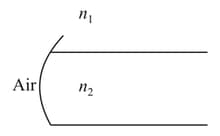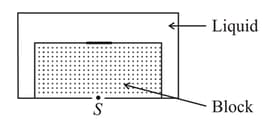Assertion: Focal length of a lens depends on the wavelength of light used.
Reason: The more the wavelengths, the lesser is the focal length.

Important Questions on Geometric Optics
Assertion: In front of a concave mirror a point object is placed between focus and centre of curvature. If a glass slab is placed between object and mirror, then an image from the mirror may become virtual.
Reason: Glass slab always makes a virtual image of a real object.
Assertion: Convex mirror will always make a virtual image.
Reason: Convex mirror is diverging in nature. Its power is negative.
Assertion: If angle of incidence in the case of a prism is gradually increased, then deviation produced by prism will first decrease then increase.
Reason: At minimum deviation, .
Assertion: A mirror has only one focus, while that of less has two foci.
Reason: Both the foci of a mirror coincide at one point.
A transparent thin film of uniform thickness and refractive index is coated on the convex spherical surface of radius at one end of a long solid glass cylinder of refractive index , as shown in the figure. Rays of light parallel to the axis of the cylinder traversing through the film from air to glass get focused at distance from the film, while rays of light traversing from glass to air get focused at distance from the film. Then,

A point source is placed at the bottom of a transparent block of height and refractive index . It is immersed in a lower refractive index liquid as shown in the figure. It is found that the light emerging from the block to the liquid forms a circular bright spot of diameter on the top of the block. The refractive index of the liquid is

Four combinations of two thin lenses are given in column I. The radius of curvature of all curved surfaces is and the refractive index of all the lenses is given. Match lens combinations in column with their focal length in column and select the correct answer using the codes given below the columns.
| Column- | Column- |
 |
|
 |
|
 |
|
 |
